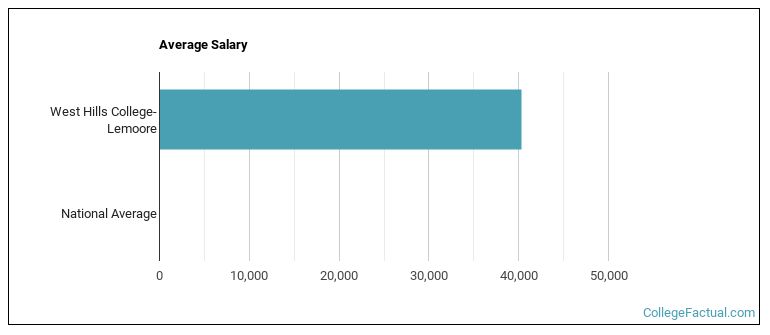 by our College Data Analytics Team
by our College Data Analytics TeamExplore the best ranked schools for the programs you are most interested in.
West Hills College-Lemoore is ranked #1,371 out of 2,152 schools in the nation for overall quality on College Factual's 2025 Best Colleges list. This is an improvement over the previous year, when West Hills College-Lemoore held the #1,387 spot on the Best Overall Colleges list.
West Hills College-Lemoore is also ranked #129 out of 161 schools in California.
West Hills College-Lemoore has an open admissions policy, so you should not have much trouble being accepted by the school. Still, it is important to fill out the application completely and submit any requested materials, which may include proof that you have a high school diploma or the equivalent.
At West Hills College-Lemoore, the student to faculty ratio is 27 to 1. Compared to the national average of 15 to 1, this is somewhat high. This could mean that class sizes may be larger than they are at other colleges or universities or that professors may be required to teach more classes.
Another measure that is often used to estimate how much access students will have to their professors is how many faculty members are full-time. The idea here is that part-time faculty tend to spend less time on campus, so they may not be as available to students as full-timers.
The full-time faculty percentage at West Hills College-Lemoore is 27%. This is lower than the national average of 47%.
The freshmen retention rate of 76% tells us that most first-year, full-time students like West Hills College-Lemoore enough to come back for another year. This is a fair bit higher than the national average of 68%. That's certainly something to check off in the good column about the school.
During the 2017-2018 academic year, there were 3,932 undergraduates at West Hills College-Lemoore with 1,191 being full-time and 2,741 being part-time.
The net price is calculated by adding tuition, room, board and other costs and subtracting financial aid.Note that the net price is typically less than the published for a school. For more information on the sticker price of West Hills College-Lemoore, see our tuition and fees and room and board pages.
It's not uncommon for college students to take out loans to pay for school. In fact, almost 66% of students nationwide depend at least partially on loans. At West Hills College-Lemoore, approximately 1% of students took out student loans averaging $5,407 a year. That adds up to $21,628 over four years for those students.
Get more details about paying for West Hills College-Lemoore.

See which majors at West Hills College-Lemoore make the most money.
Get more details about the location of West Hills College-Lemoore.

Contact details for West Hills College-Lemoore are given below.
| Contact Details | |
|---|---|
| Address: | 555 College Avenue, Lemoore, CA 93245 |
| Phone: | 559-925-3000 |
| Website: | https://www.westhillscollege.com/lemoore/ |
| Most Popular Majors | Bachelor’s Degrees | Average Salary of Graduates |
|---|---|---|
| Liberal Arts General Studies | 597 | NA |
| Human Development & Family Studies | 301 | NA |
| Health Sciences & Services | 108 | NA |
| Business Administration & Management | 69 | NA |
| General Psychology | 69 | NA |
| Criminal Justice & Corrections | 63 | NA |
| Biological & Physical Science | 55 | NA |
| Nursing | 38 | NA |
| Sociology | 25 | NA |
| Allied Health Professions | 24 | NA |
Online learning is becoming popular at even the oldest colleges and universities in the United States. Not only are online classes great for returning adults with busy schedules, they are also frequented by a growing number of traditional students.
In 2022-2023, 3,100 students took at least one online class at West Hills College-Lemoore. This is an increase from the 2,663 students who took online classes the previous year.
| Year | Took at Least One Online Class | Took All Classes Online |
|---|---|---|
| 2022-2023 | 3,100 | 1,892 |
| 2021-2022 | 2,663 | 1,535 |
| 2020-2021 | 3,838 | 3,647 |
| 2018-2019 | 2,106 | 977 |
Learn more about online learning at West Hills College-Lemoore.
Footnotes
*The racial-ethnic minorities count is calculated by taking the total number of students and subtracting white students, international students, and students whose race/ethnicity was unknown. This number is then divided by the total number of students at the school to obtain the racial-ethnic minorities percentage.
References
More about our data sources and methodologies.